Welcome to “12 Inspirational Affordable Home Staging Tips,” where we blend creativity with practicality to unlock the full potential of your living space. Whether you’re just dipping your toes into the world of interior design or you’re a seasoned decorator looking to refresh your home, this guide is your ticket to transforming your surroundings without breaking the bank.
In every home, there’s a unique story waiting to be told through design, and these tips will help you narrate it beautifully. Discover the joy of breathing new life into your rooms with simple yet impactful changes that deliver high visual impact for a low investment.
By embracing these budget-friendly techniques, you’ll not only elevate the aesthetics of your space but also enhance its functionality and comfort. Get ready to feel empowered and inspired, knowing that with a few strategic adjustments, your home can mirror your personal style and make a lasting impression.
Declutter to Maximize Space
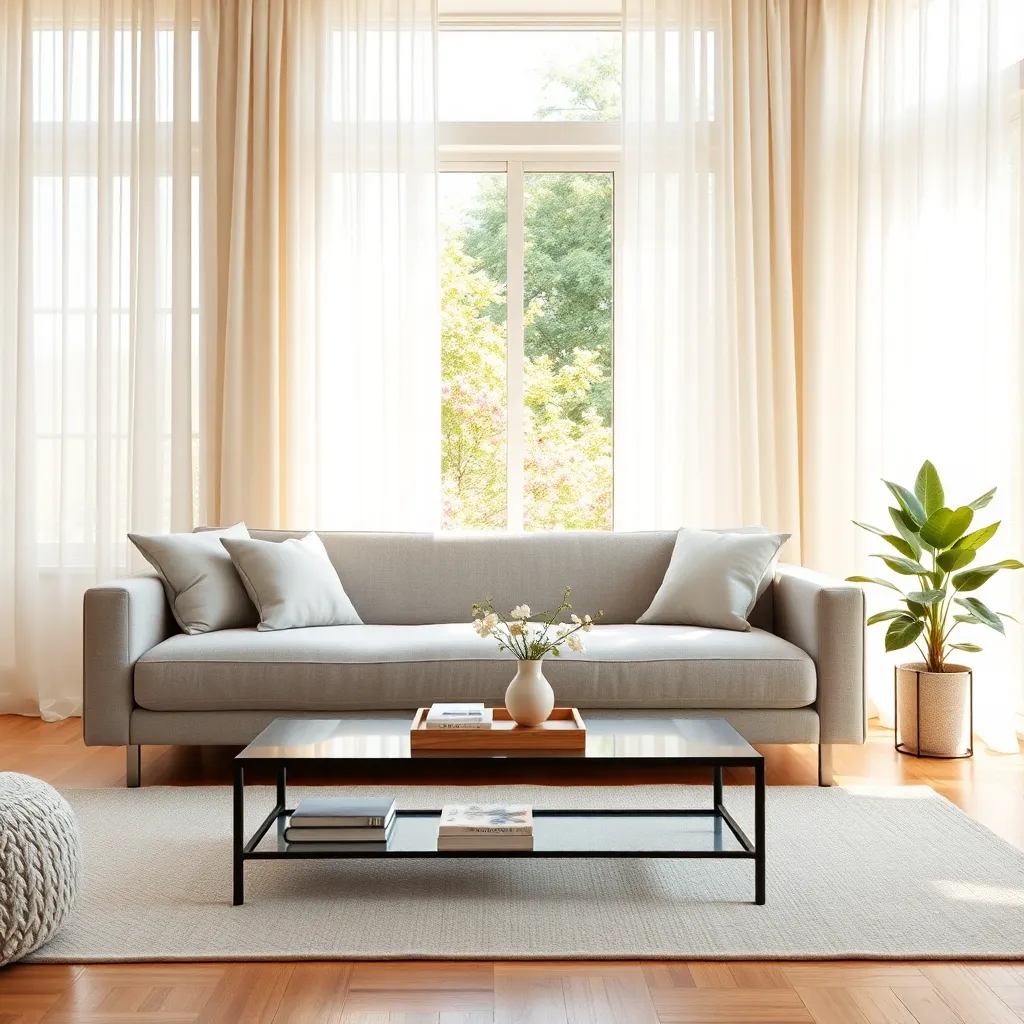
Before embarking on a home staging project, start by decluttering every room to reveal its potential. Eliminating unnecessary items creates a cleaner, more spacious look, making it easier for potential buyers to envision their own belongings in the space.
Invest in multi-functional furniture pieces like ottomans with storage or foldable tables to reduce clutter and maximize space. These items not only serve their primary function but also offer hidden storage solutions, keeping the room tidy and efficient.
Consider implementing a neutral color palette throughout the home to unify the space and make it appear larger. Light shades like beige, soft gray, or cream can dramatically open up a room, while strategically placed mirrors reflect light and create an illusion of depth.
For those with a more advanced skill set, experiment with vertical storage solutions to free up floor space. Install floating shelves or wall-mounted cabinets to keep items off the ground while maintaining an organized and visually appealing layout.
Highlight Natural Light Sources
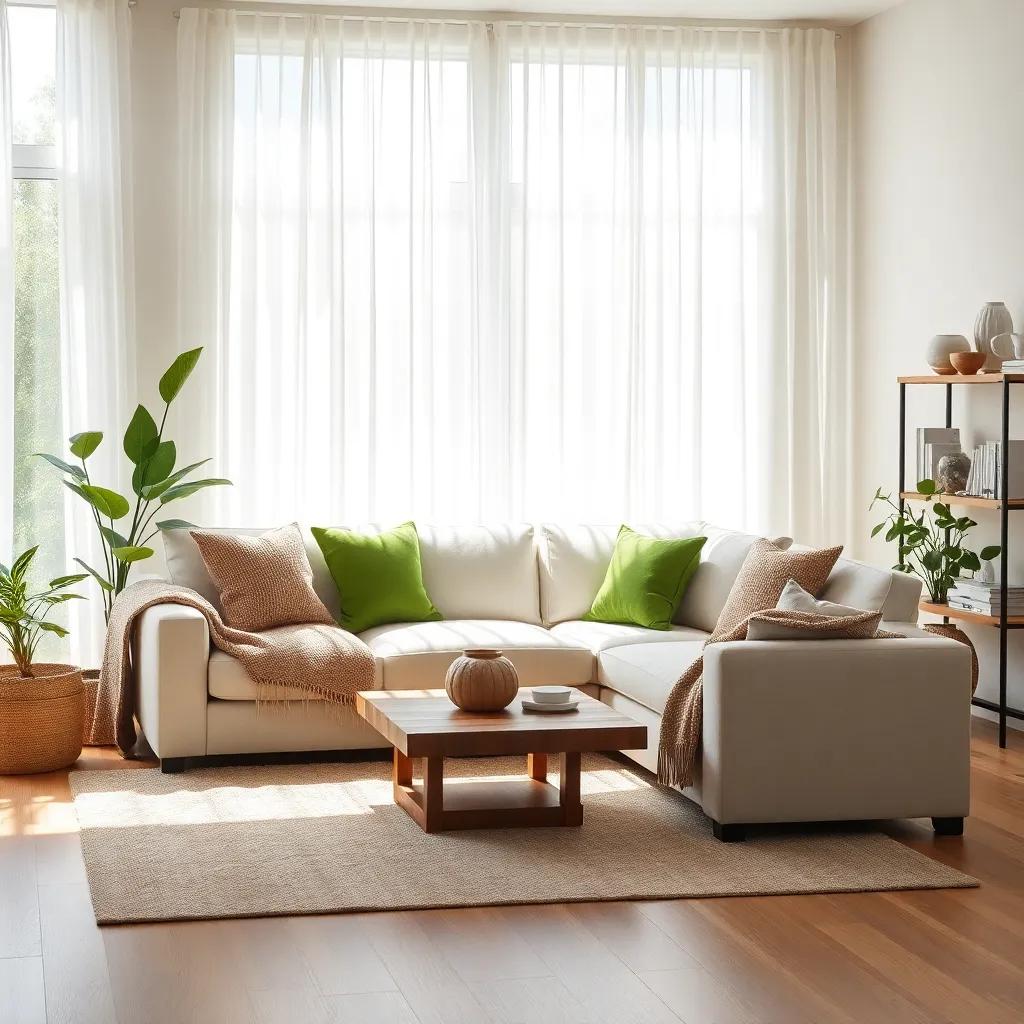
Maximizing natural light in your home can dramatically enhance its appearance and feel. Start by ensuring windows are clean and unobstructed, allowing the most light to filter through.
Consider using sheer or light-colored curtains to maintain privacy without sacrificing brightness. For a more modern look, opt for roller shades in neutral tones that can be easily pulled up during the day.
Strategically place mirrors across from windows to reflect light and create an illusion of space. A well-placed large mirror not only brightens a room but also adds a touch of elegance to the décor.
For an advanced touch, use light-colored, glossy paints on walls to enhance light reflection. Soft whites, pale grays, and light pastels work particularly well in bouncing light around a room.
Use Neutral Tones and Textures
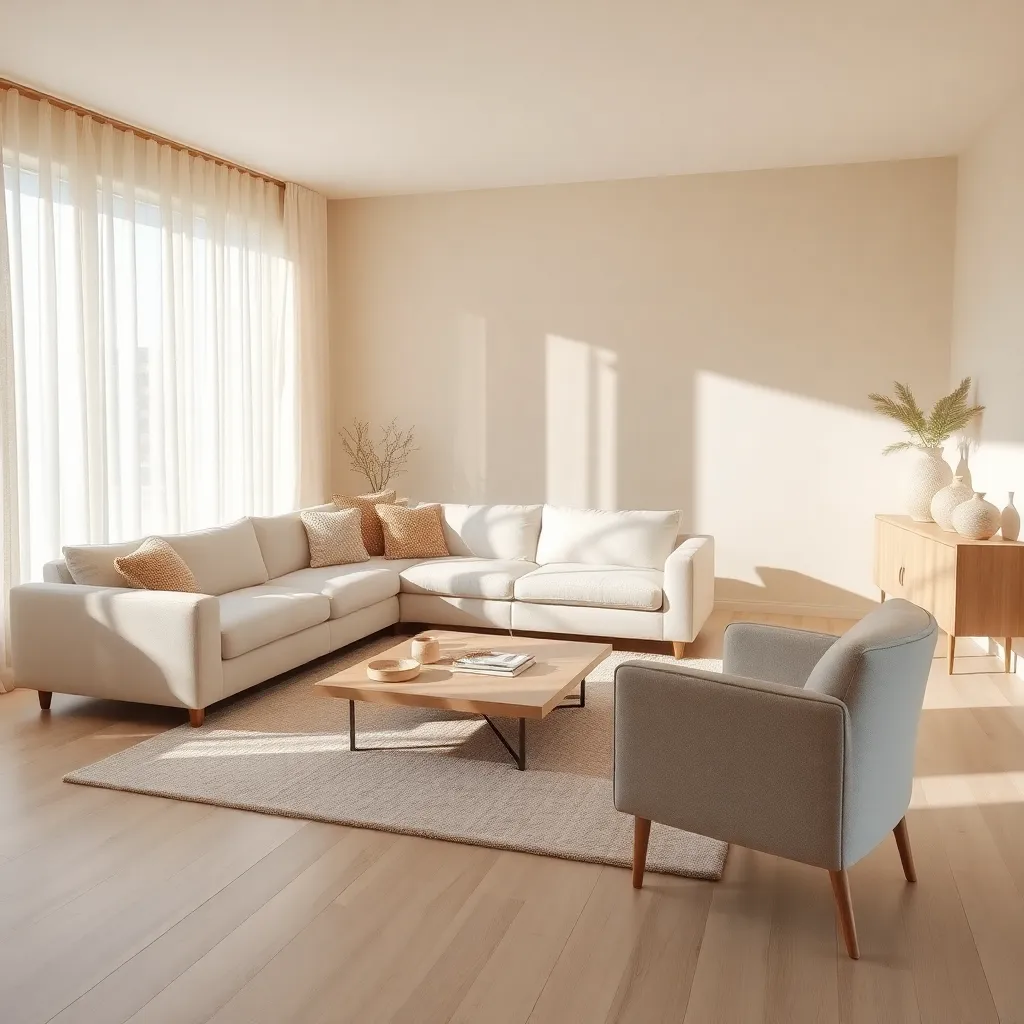
Neutral tones are an essential component in creating a versatile and inviting home environment. Opt for a palette of soft whites, beiges, and grays to provide a calming backdrop that appeals to a wide range of tastes.
Incorporate various textures to add depth and interest to your neutral color scheme. Consider using materials like linen, wool, and natural fibers in your choice of rugs, throws, and cushions to create a tactile experience.
Furniture selection is critical when working with neutral tones; choose pieces with clean lines and understated elegance. A classic beige sofa can be the perfect anchor in your living room, complemented by textured pillows and throws for added warmth.
Layering textures is a simple yet effective technique to elevate your space without overwhelming it. For example, you can drape a woven blanket over a plush armchair or place a jute rug beneath a sleek coffee table to introduce subtle contrasts.
For advanced decorators, consider incorporating metallic accents or wooden elements to enhance your neutral scheme. A strategically placed bronze lamp or a reclaimed wood coffee table can introduce a new dimension without deviating from the neutral palette.
Create Inviting Entryways
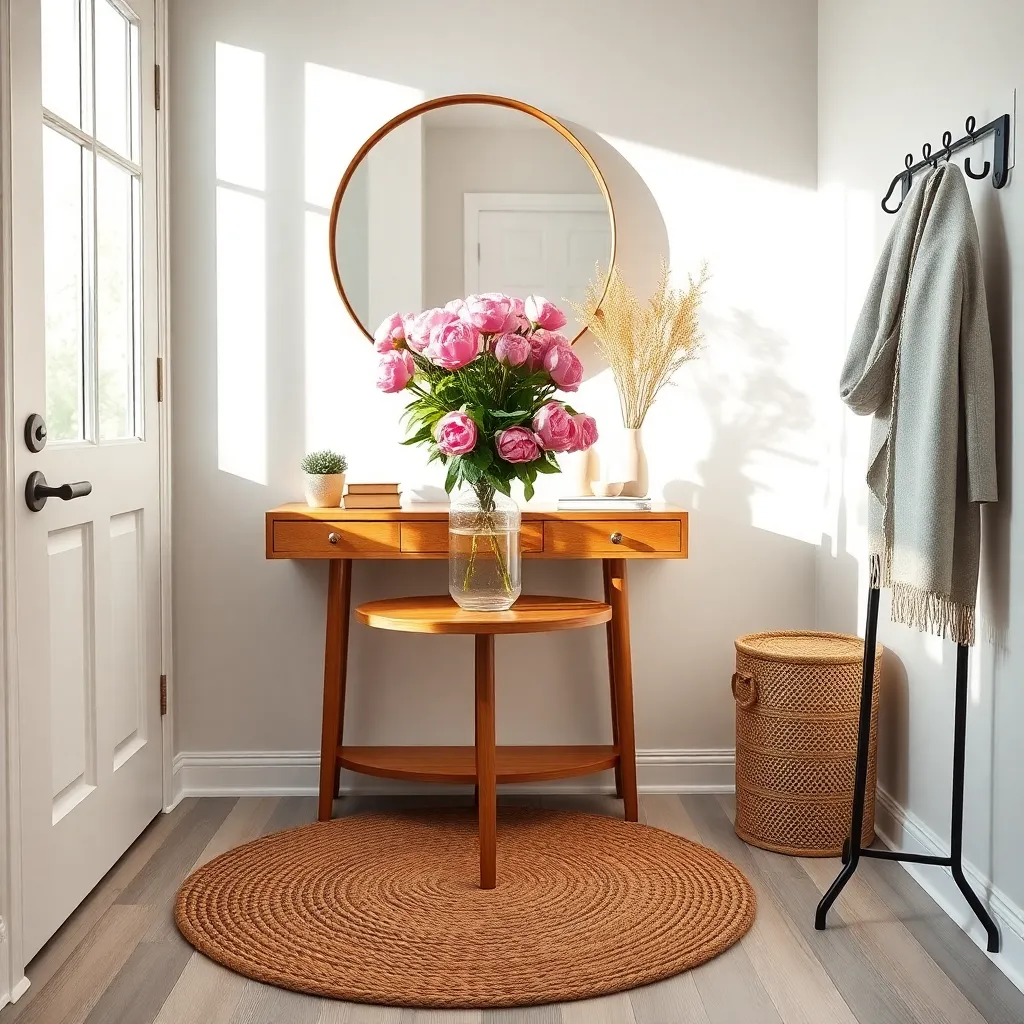
Creating an inviting entryway sets the tone for the rest of your home, making guests feel welcome from the moment they step inside. Start by choosing a warm color palette, such as soft whites paired with rich earth tones, to evoke a sense of comfort and hospitality.
Furniture selection is crucial, so opt for a functional yet stylish console table. Position it against a wall for easy access, and use it to display decorative elements like a vase with fresh flowers or a small sculpture.
Lighting plays a significant role in enhancing the mood of your entryway. Consider installing a chic pendant light or a pair of sconces to provide ample illumination, creating a well-lit and inviting ambiance.
For a more advanced touch, incorporate a mirror to give the illusion of a larger space and to reflect light. Place it strategically across from the door or adjacent to the console table to maximize its effect, making the entryway feel open and airy.
Incorporate Fresh Greenery
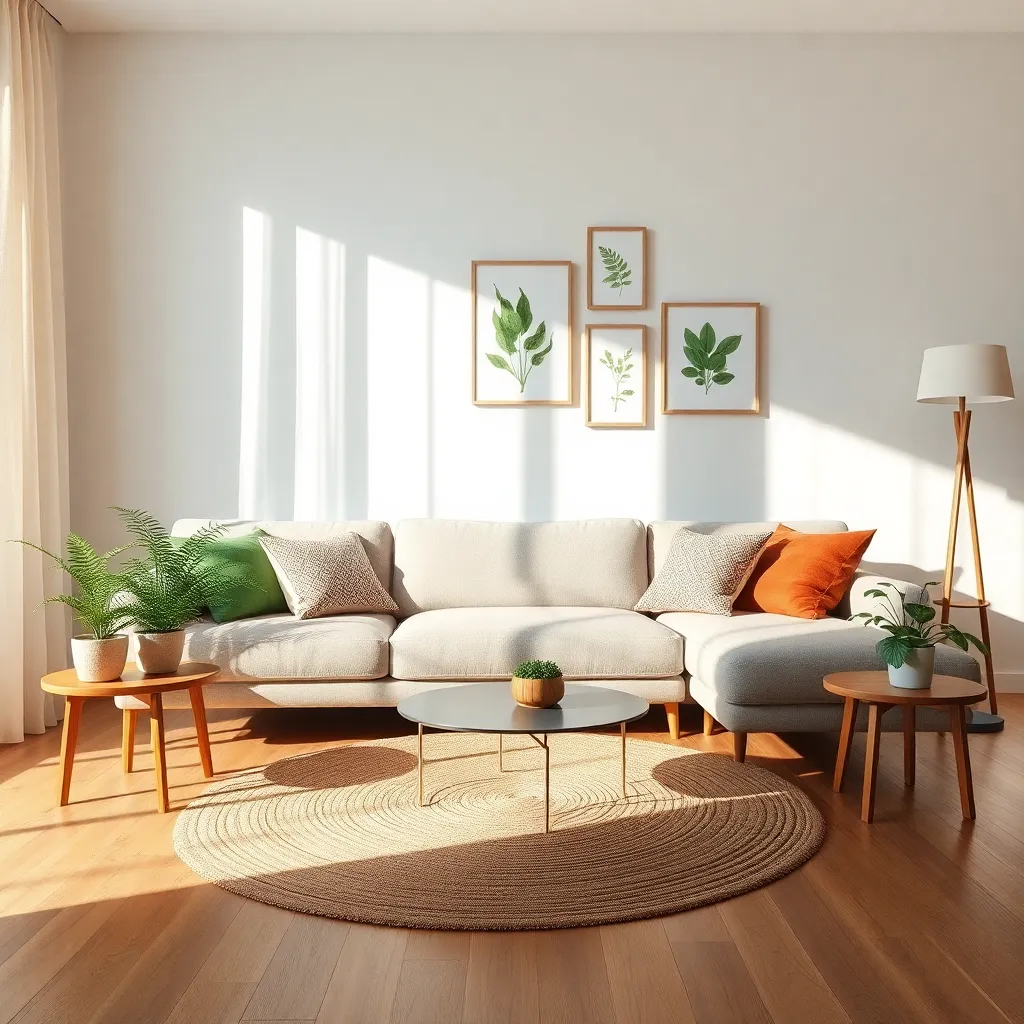
Bringing fresh greenery into your home is an affordable and effective way to add life and vibrancy to any space. Start by selecting plants that complement the style of your room—such as sleek succulents for modern interiors or lush ferns for a more bohemian vibe.
Consider the placement of your greenery to maximize its impact. Position taller plants like fiddle leaf figs in corners or next to furniture pieces to create a natural flow in the room, while smaller plants can be placed on shelves or windowsills to add interest at eye level.
For beginners, hardy plants like snake plants and pothos are great choices because they require minimal care and are forgiving of occasional neglect. More experienced decorators might experiment with hanging plants or creating a small indoor herb garden in the kitchen for a touch of freshness and practicality.
Incorporate different types of planters to enhance your design scheme—choose materials like ceramic, wood, or metal to match your existing decor. Mix and match sizes and styles to avoid a monotonous look, and consider using geometric or colorful pots to add a pop of personality to your space.
Stage with Minimalist Decor
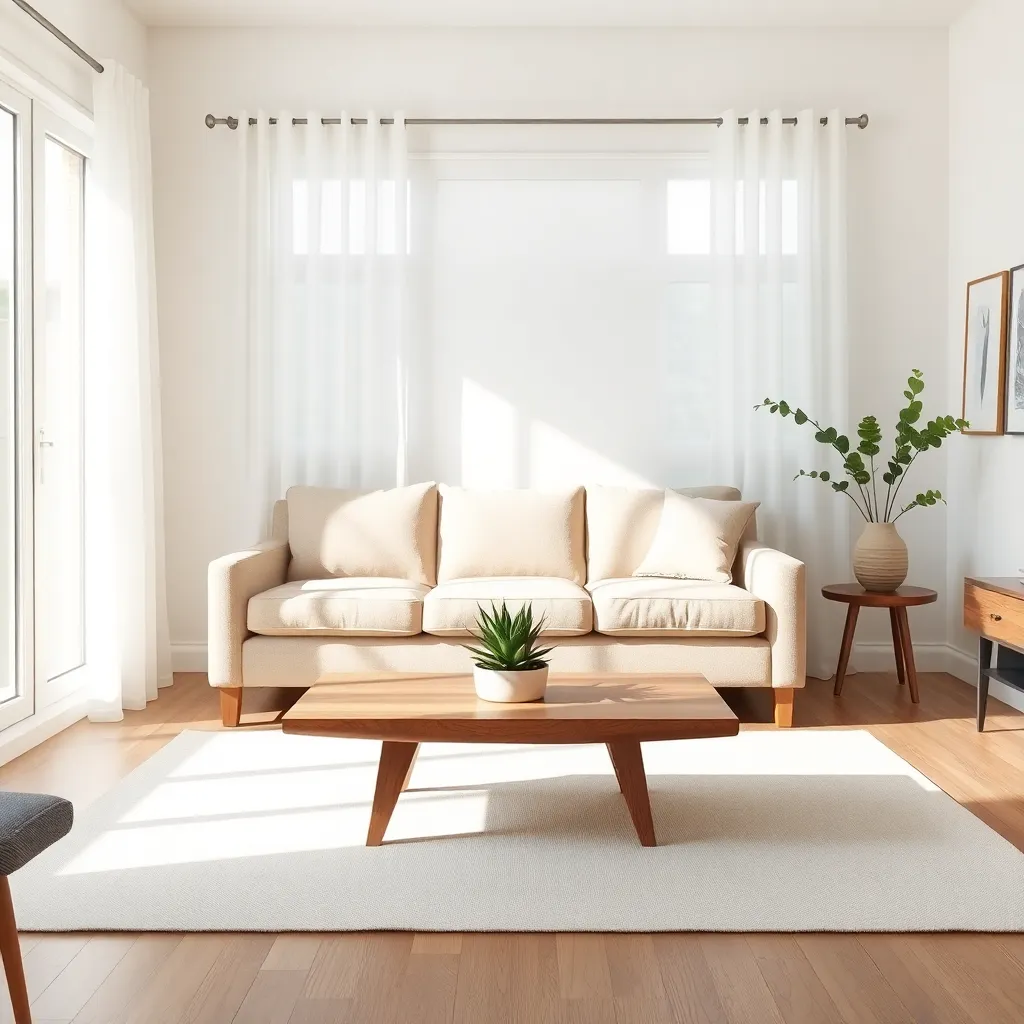
Incorporating minimalist decor can transform a space into a serene and inviting environment. Start by selecting furniture with clean lines and simple shapes, such as a sleek sofa or a streamlined coffee table, to create a sense of openness.
Choose a neutral color palette that promotes calmness and versatility. Opt for shades of white, beige, or soft gray, and add texture through materials like linen, cotton, or wool to maintain interest without overwhelming the space.
Place each piece of furniture thoughtfully, ensuring there is ample space for movement and that the room doesn’t feel cluttered. Consider the function of the space and use multi-purpose furniture, such as a storage ottoman or a bench with built-in storage, to keep the area tidy.
For those looking to add an advanced touch, incorporate a few statement pieces that reflect your personality without disrupting the minimalist aesthetic. A single piece of art or a unique light fixture can serve as a focal point, ensuring the room is both visually appealing and functional.
Rearrange Furniture for Flow

When rearranging furniture for optimal flow, consider the paths you naturally take through your space and aim to keep them clear. Identify focal points like fireplaces or large windows and arrange your seating and tables to highlight these features, creating a welcoming atmosphere.
To maintain a sense of balance, ensure that furniture pieces are proportionate to the room size. For larger spaces, use area rugs to define zones, while in smaller rooms, opt for multi-functional furniture like ottomans with storage to maximize utility without cluttering the space.
Begin with the largest piece of furniture, typically the sofa or bed, and orient it towards the room’s focal point. Arrange smaller pieces like chairs and side tables in a way that facilitates conversation and movement, ensuring they don’t block natural pathways.
Consider incorporating a cohesive color scheme to enhance flow, using a mix of neutral tones and pops of color to guide the eye smoothly around the room. If you’re working with an open-plan design, use lighting fixtures or plants to subtly separate areas while maintaining an open feel.
Add Pops of Color Sparingly
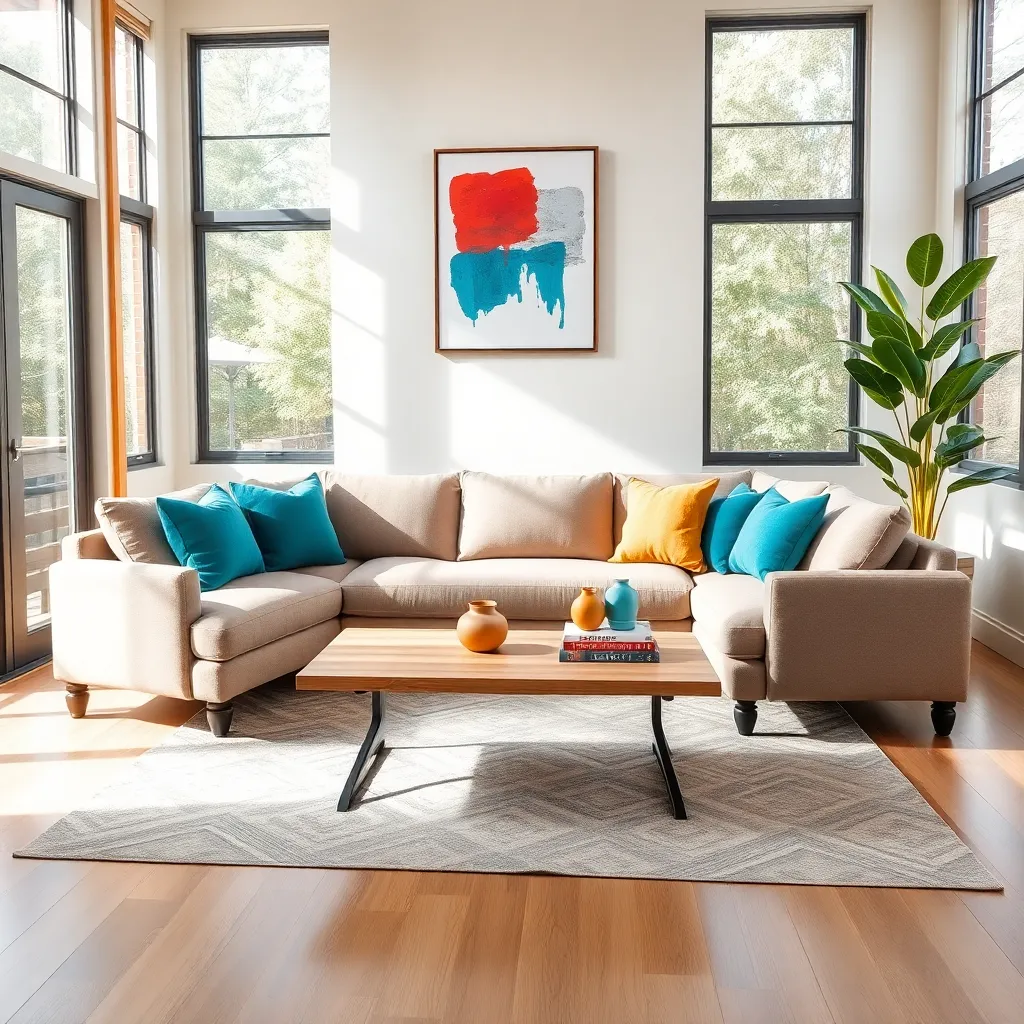
Introducing pops of color sparingly can invigorate your home without overwhelming the senses. Start by choosing a color palette that complements your existing decor, focusing on two or three shades that reflect your personality and preferences.
Consider adding colorful throw pillows or a vibrant rug to bring life to a neutral sofa or floor. These elements are easy to swap out seasonally, allowing you to refresh your space without major investments.
For a more subtle approach, use colorful accents like vases or artwork on shelves and mantels. This technique allows you to play with color intensity and placement, enhancing the room’s visual appeal without cluttering the space.
Advanced decorators might explore using a bold statement piece, such as a brightly colored armchair or a painted accent wall, to create a focal point. When choosing such elements, ensure they harmonize with the room’s overall design to maintain a cohesive look.
Layer Rugs for Depth
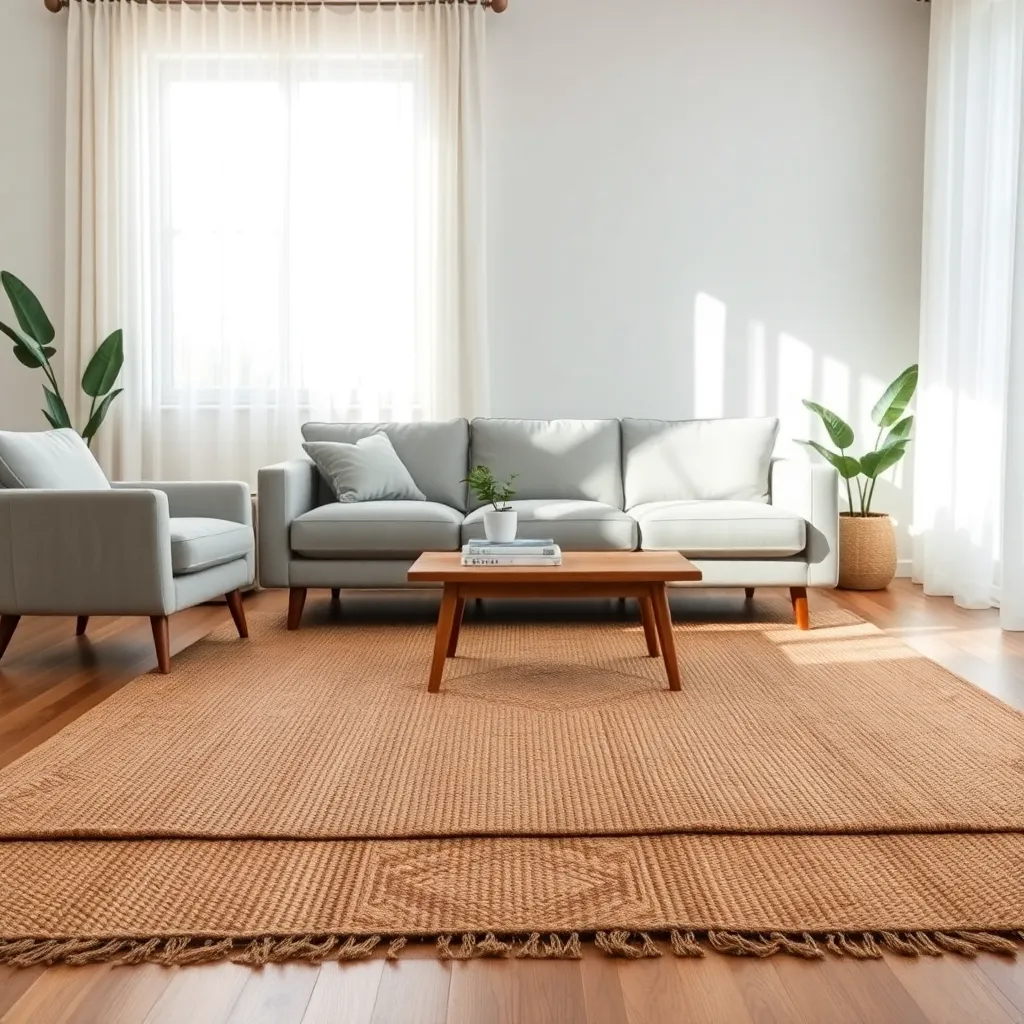
Layering rugs is a simple yet effective way to add depth and dimension to any room. Start by choosing a large, neutral base rug, perhaps in a natural fiber like jute or sisal, as this will create a versatile foundation.
Once you have your base, select a smaller, more colorful or patterned rug to place on top. This secondary rug can be aligned at an angle or slightly offset to create visual interest and highlight specific areas, such as beneath a coffee table or in front of a sofa.
For a cohesive look, ensure that at least one color from the top rug ties into other elements in the room, such as throw pillows or wall art. Mixing textures in this way not only adds warmth but also invites a sense of luxury and comfort into the space.
Advanced decorators might experiment with bolder combinations, like layering a vibrant Moroccan or Turkish rug over a subtle geometric pattern. This technique allows you to introduce exciting patterns without overwhelming the space, and it’s an opportunity to express personal style effectively.
Feature Eye-Catching Artwork
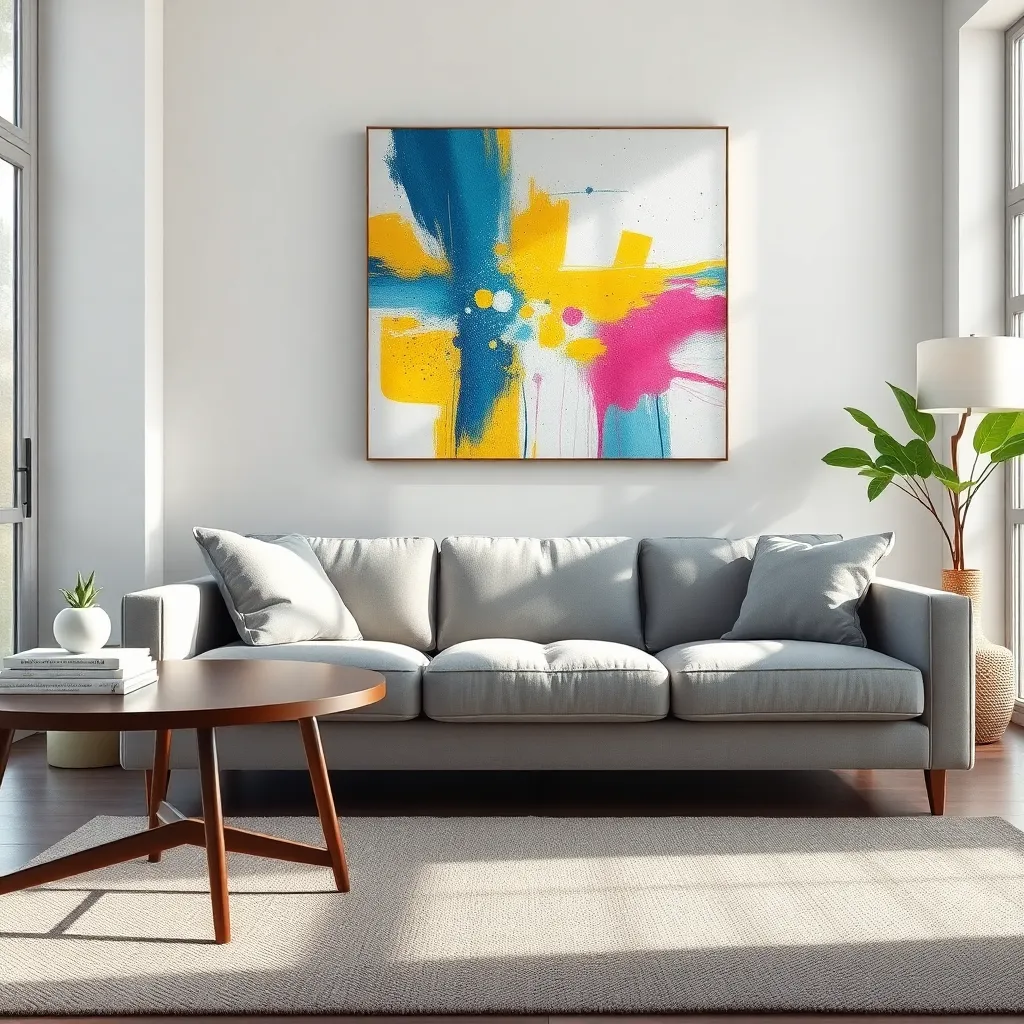
Incorporating eye-catching artwork into your home staging can instantly elevate a room’s appeal. Start by selecting pieces that complement your existing color scheme and furniture style to create a cohesive look.
Placement is key when it comes to displaying artwork effectively. Consider hanging a large, dramatic piece above a sofa or mantel to serve as a focal point, drawing the eye and creating a sense of balance in the room.
For those looking to add depth and interest, group smaller artworks together in a gallery wall arrangement. Mix and match different frame styles and sizes, but keep a common element like color or theme to maintain harmony.
To enhance the impact of your artwork, use strategic lighting techniques. Install picture lights or adjustable track lighting to highlight key pieces, ensuring they stand out and add visual intrigue to the space.
Update Cabinet Hardware
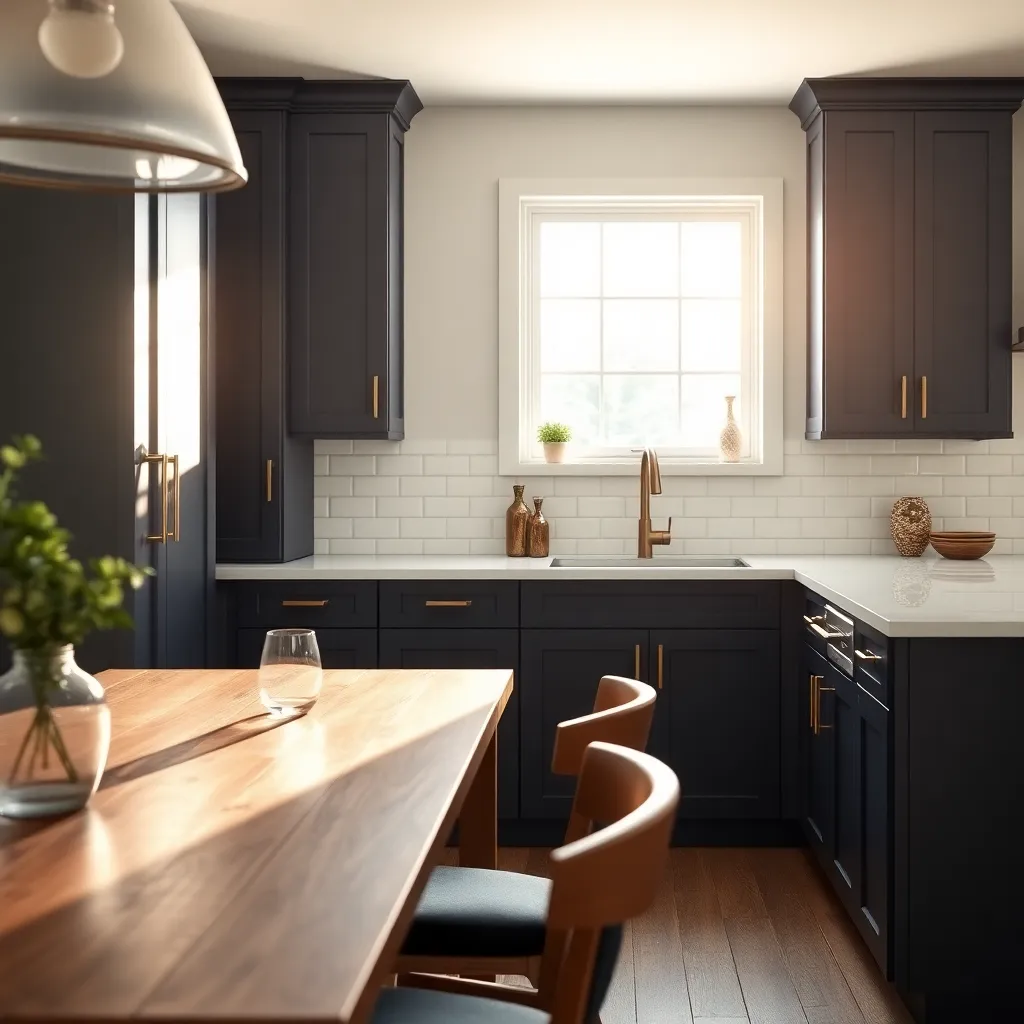
Updating cabinet hardware is one of the simplest ways to transform the look of your kitchen or bathroom without a complete renovation. Choosing modern hardware designs in matte black or brushed brass can lend a contemporary touch to older cabinets.
Begin by assessing the current style and color scheme of your space to ensure the new hardware complements it. For a cohesive look, coordinate the finishes of your cabinet hardware with other fixtures like faucets and lighting.
For those new to home staging, opt for classic shapes like round knobs or simple bar pulls, as they are versatile and easy to install. More experienced decorators might explore mixed metals, combining nickel and brass, for a trend-forward yet timeless aesthetic.
Measure the existing holes on your cabinets to find matching hardware or use backplates to cover old holes and create a fresh look. If you’re aiming for an upscale effect, consider custom hardware designs that reflect your personal style, adding a unique element to your home staging efforts.
Accessorize with Thoughtful Details

Accessorizing with thoughtful details can elevate any space, making it feel curated and intentional. Start by selecting a few key pieces like a bold vase or an intricate sculpture, which can act as conversation starters and focal points.
Consider incorporating textiles such as throw pillows and blankets to add texture and warmth. Mixing materials like velvet and linen can create a layered look that feels both luxurious and inviting.
Art and wall decor play a crucial role in accessorizing, so choose pieces that reflect your personality and the mood you wish to convey. Opt for a mix of sizes and frames to create a dynamic gallery wall that draws the eye.
Lighting is another essential detail that shouldn’t be overlooked. Use a combination of floor lamps, table lamps, and ambient lighting to create a cozy and adaptable environment.
For a more advanced touch, experiment with color coordination by matching accessories to the existing color scheme in subtle ways. For instance, if your sofa is a rich navy, consider gold or brass accents that complement the color without overwhelming the space.
Conclusion: Growing Success with These Plants
In this enlightening journey through ’12 Inspirational Affordable Home Staging Tips,’ we explored the art of creating inviting spaces that reflect your personality and foster stronger connections at home. We began by emphasizing the importance of decluttering to create an open, welcoming environment. Next, we discussed the power of strategic lighting and color choices to set the mood. We delved into the magic of rearranging furniture to encourage conversation, the subtle impact of scent, and the charm of personal touches that tell your story. We also highlighted the value of incorporating nature, the warmth of layered textures, and the significance of maintaining cleanliness and order. Finally, we explored budget-friendly DIY projects, the role of music in ambiance, and the art of repurposing to keep things fresh.
Now, take a moment to choose one tip and implement it today—perhaps rearrange a room or add a touch of nature. As you embark on this transformation, save this article for future reference, ensuring these tips remain at your fingertips as you craft your ideal living space. Remember, nurturing your living environment is a step toward nurturing your relationships, setting the stage for both immediate joy and long-term success. Embrace this journey with optimism and watch your relationships flourish.
